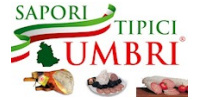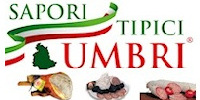By 1618 the lord of Colfiorito enjoyed an annual income of 72 shields, and controlled the villages of Cupigliolo, Forcatura, Porcarella and Polveragna.
Colfiorito itself stands on the ancient Via della Spina road that was a vital link between Umbria and the Adriatic Sea. Bronze Age axes have been unearthed here, indicating that this was a route used in very ancient times.
The Roman City of Plestia
The inhabitants of the plateau area of Plestia started to become a community towards the 4th century BC, with the emergence of a local aristocracy that was similar to that of the Etruscans. The inhabitants of this area had in fact come into contact with the Etruscans thanks to the Iron Road trade route of iron ore that passed here and was used by traders who quarried the metal on the island of Elba and transported it to the Adriatic where it was sold to the Greeks. The strength and wealth of this ancient people therefore depended on their control of the pastures and trade routes between Etruria and the Adriatic.
The area later came under the influence of Rome. By the 1st century BC the municipium of Plestia was already an urbanised development, as proven by the remains of a building that lie under the church of Santa Maria di Plestia. At that time the town covered an area of some 62 hectaires.
Plestia achieved the status of bishopric in the 499 and 502AD synods, under the pontificate of Simmacus (498-514). A certain Florentiuis Plestinus was among the bishops to subscribe, indicating that the city had already converted to Christianity. A bishop remained at Plestia until 1006, when a papal order decreed that the three dioceses of Plestia, Gualdo Tadino and Rosella should come under single diocese of Nocera.
It is still unclear why the city was abandoned around the year 1000. Some think an earthquake caused widespread flooding in the area, while others believe that the city was destroyed by the troops of Otto III, who passed here in June 996.
Famous Passers-By
In 1382Louis I of Anjou and Amedeo VI of Savoy passed here. The sojourn of Pope Julius II in the area, who stayed in the San Bartolomeo di Brogliano convent with seven cardinals on June 16th 1511, was one of Colfiorito's most illustrious visitors. Built in 1270 by workmen from Colfiorito with materials taken from the nearby ruined city of Plestia, the convent is important because it contains the remains of the beatified Giovanni da Valle, as well as being the place were the beatified Polo Trinci stayed for a long period of time.
On April 18th 1598 another important visitor appeared: Pope Clement VIII, who stopped here on his way to Ferrara.
In 1707 Joseph I and his troops passed here, while the king was sending Count Daun down to the Kingdom of Naples.
Colfiorito Now
In recent years many of those living in the mountain villages around Colfiorito have moved down to the valley. Records show that in 1606 the population in the mountains was exactly the same as in 1961, with the difference that in 1606 the population that inhabited the mountain villages was double that of those living in the valleys.
Colfiorito is the only town not to have suffered the fate of its neighbouring villages. Favoured by its position on the SS. 77 road, a number of craft and cheese production firms have their headquarters here.
Among the many excellent products of the area, the best known remains the Colfiorito red potato. The red potato will shortly have a provenance qualification and is excellent with gnocchi or in roasts.
The Colfiorito potato feast is in August. As well as featuring the usual food tasting found in many of these kinds of feasts, the Colfiorito feast is also particularly rich in cultural and amusement events.
Past editions have included meetings on the fossils found in the area, as well as exhibitions organised by schools on a variety of amusing themes such as‘Lady Cow’, ‘Dreams, Faity Tales and Reality’, or ‘Living With Your Grandparents’ .
Lovers of prize quality vegetables should certainly take a look at FERTITECNICA S.n.c., Colfiorito Tel (+39) 0742.681.442.
Where to sleep and to eat:
 |
Web site languages: Italiano English Deutsch Français Espańiol








